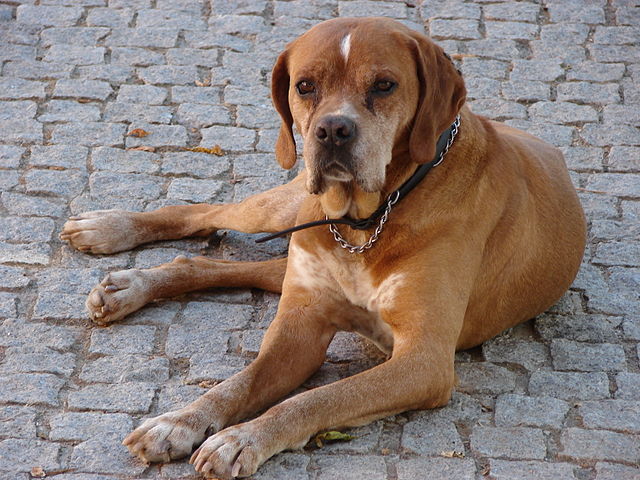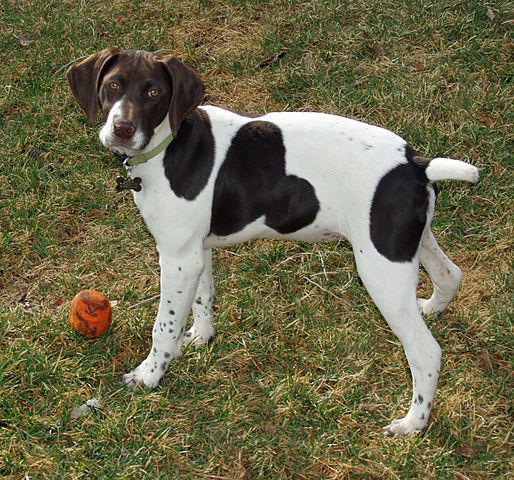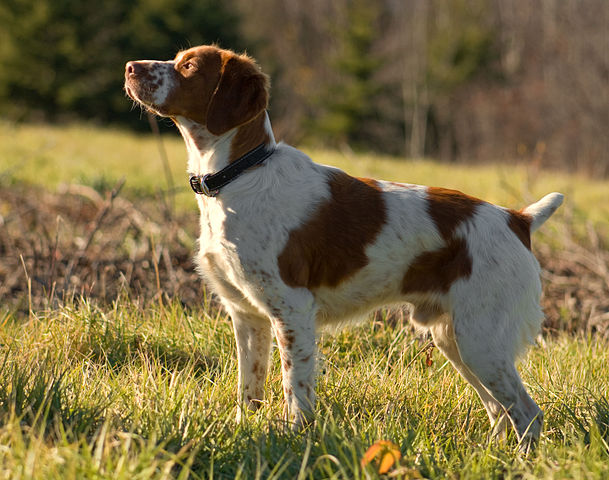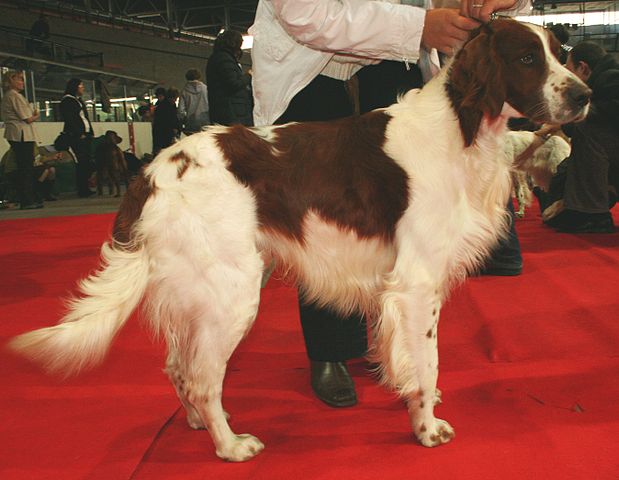The German Longhaired Pointer is a versatile gun dog able to work both in water and on land. They will retrieve both furred and feathered game, and are also skilled at blood-tracking. As this breed has been strictly bred with hunting in mind, most have the instincts to be valuable hunting dogs – they have even been called “the Ferrari of the gun dog world”. Although they are hard workers in the field, they have a calm and collected temperament in the home. They are social and loving with their families and can make wonderful pets in the right households.
The German Longhaired Pointer is a very social dog who strongly prefers to be around his people as much as possible. If left alone for long hours, he may become bored and destructive. He is in his element when he is around people – this is a friendly, outgoing, affectionate type who simply wants to be loved and give love in return. The breed also gets along well with other dogs as well as children. He may be less reliable toward cats and small pets. It should be noted that the GLP needs to be extensively socialized while still young to avoid timidity. While some can take a little while to warm up to new people, extreme shyness is often due to poor early socialization.
Longhaired Pointers are generally not noisy dogs, provided that they aren’t left home alone all day. Those who are left to fend for themselves in the house or backyard can become nuisance barkers. When this isn’t the case, they tend to only bark when something is amiss or someone is at the door – they make fine watchdogs. Depending upon the dog and the situation, the bark may either be a warning or a welcome.
The German Longhair doesn’t require a ton of grooming however his upkeep must be kept on a schedule and not forgotten about – especially if he hunts or plays outside frequently. Burrs, grass and other debris can get caught in the coat and encourage tangles. Nails and teeth need regular care. And the long ears need regular maintenance and cleaning. Outside of grooming, health care is normally very easy as these dogs have no known congenital problems. 
Longhaired Pointers, like most sporting breeds, have vast amounts of energy combined with very high hunting drives. Unlike many sporting breeds, however, they have not branched off into show lines vs. working lines. Practically all members of the breed have great desires to hunt and won’t do well in homes that don’t allow them to… well, hunt! Even “occasional hunters” might be in over their heads unless they find a puppy with a lower hunting drive to match their infrequent outings! If hunting is out of the question, it is possible to keep one as a companion but it will involve a tremendous amount of time dedicated to higher-impact exercise and frequent mental stimulation.
The GLP is a highly intelligent dog that is very trainable. They are very eager to please their owners. Be aware that this is an intense breed with a lot more power than he may look to have – a young exuberant dog may be much harder to train for a frail or elderly owner. He needs lots of consistency and an owner who can be firm when needed. Some members of the breed can get pushy or even downright aggressive when placed with the wrong type of owner. As this German pointer needs a job to do in order to be happy, obedience training is non-negotiable. After learning the basics of obedience, the GLP becomes an excellent candidate for dog sport competitions such as field trials, agility, dock diving, rally and/or flyball.
It should be obvious, but German Longhairs are not good candidates for apartments – they need lots of room to run and exercise. The best home is a rural or semi-rural home with a fenced yard, owned by an active, experienced dog person (preferably a hunter). Since these web-footed dogs also love to swim, access to lakes or streams are a plus! Clearly, many American families/homes would not make the cut.









